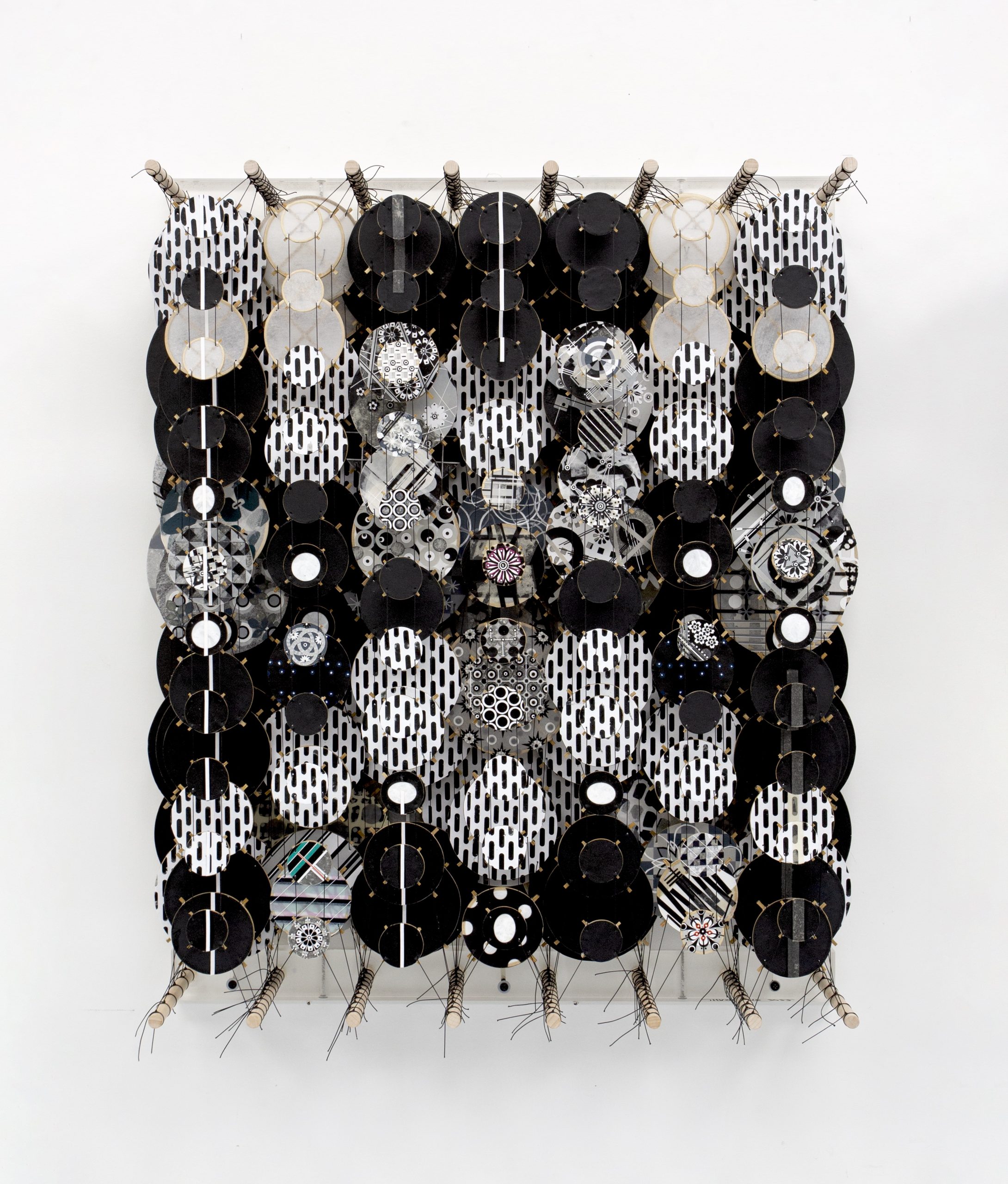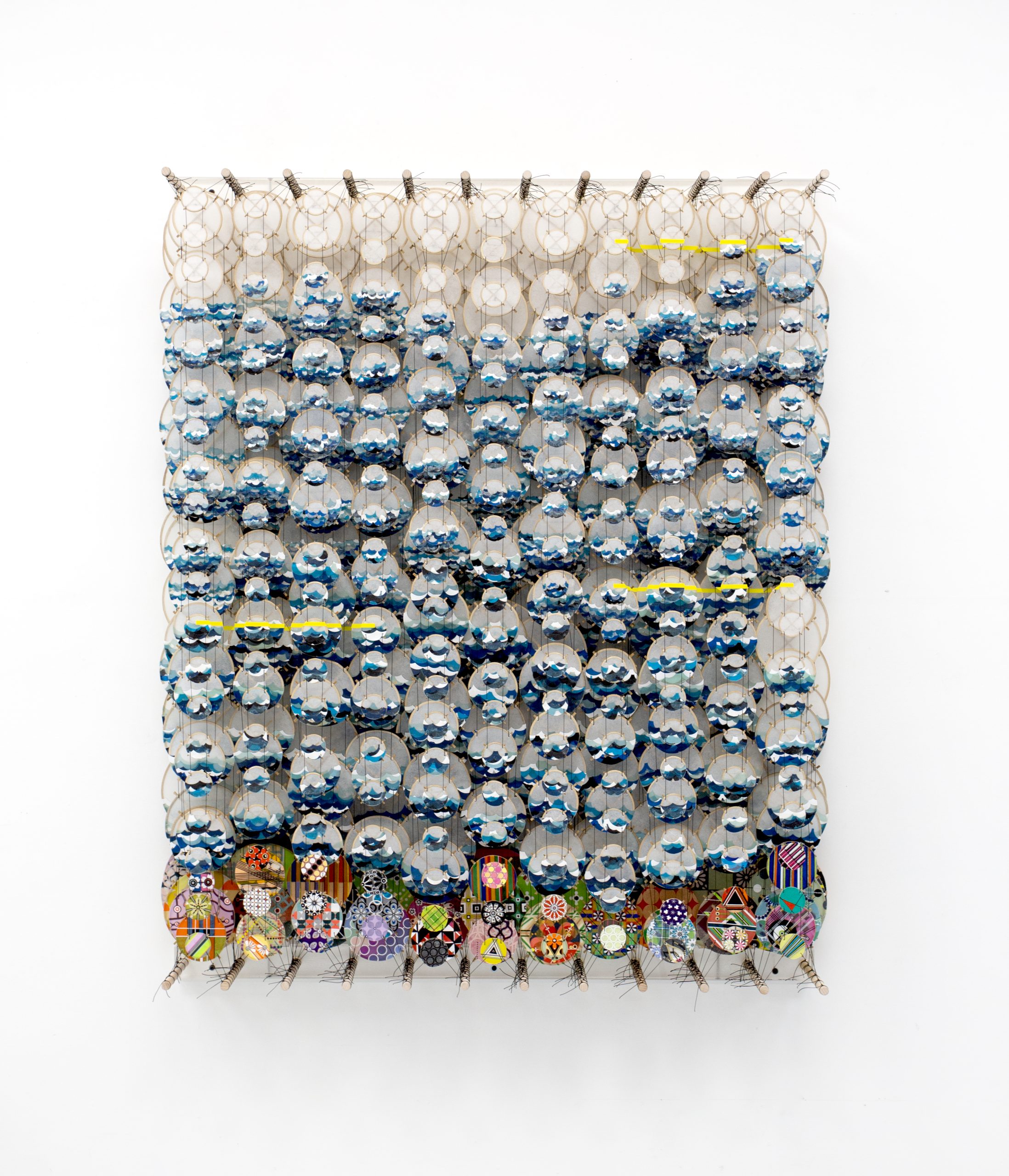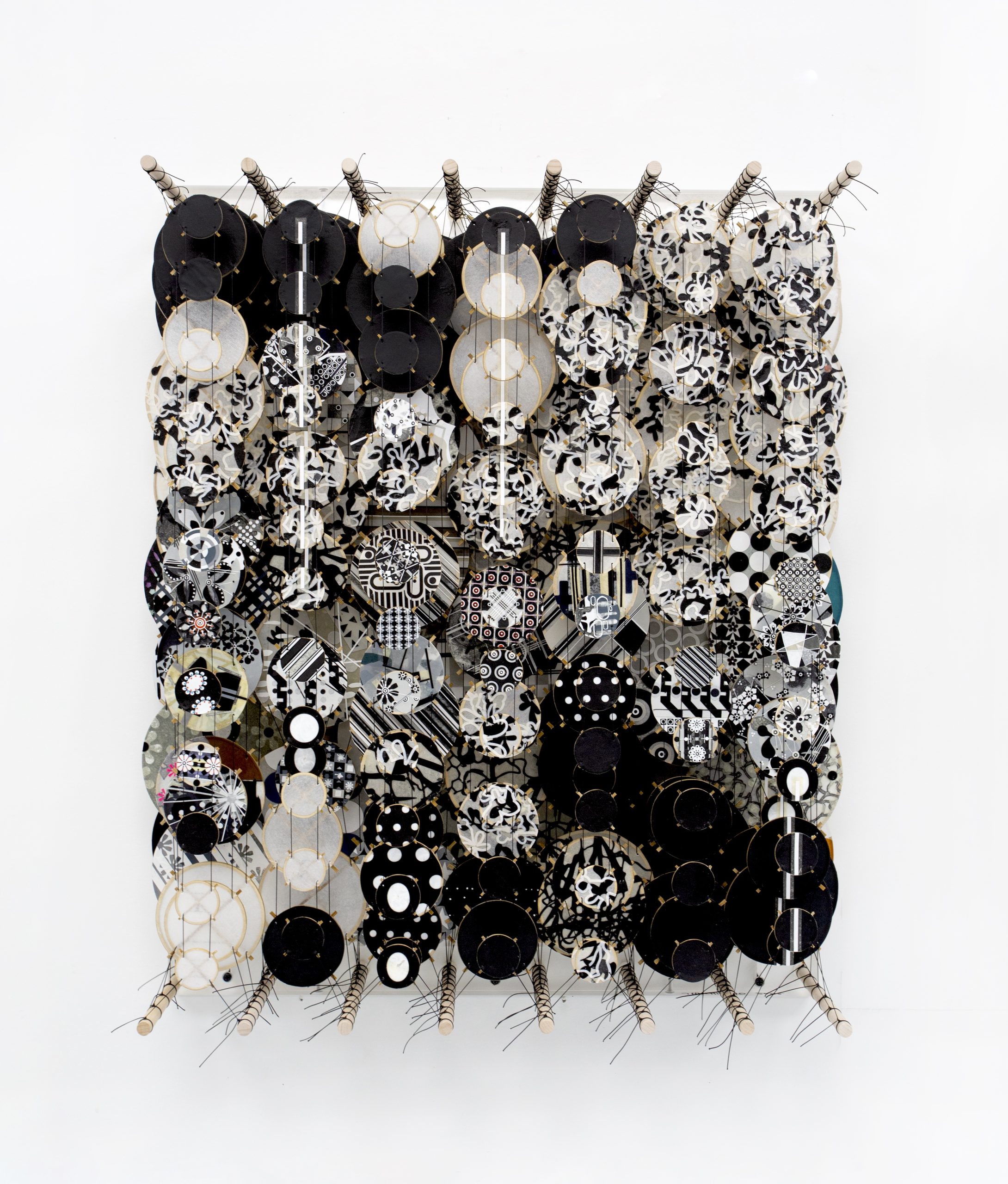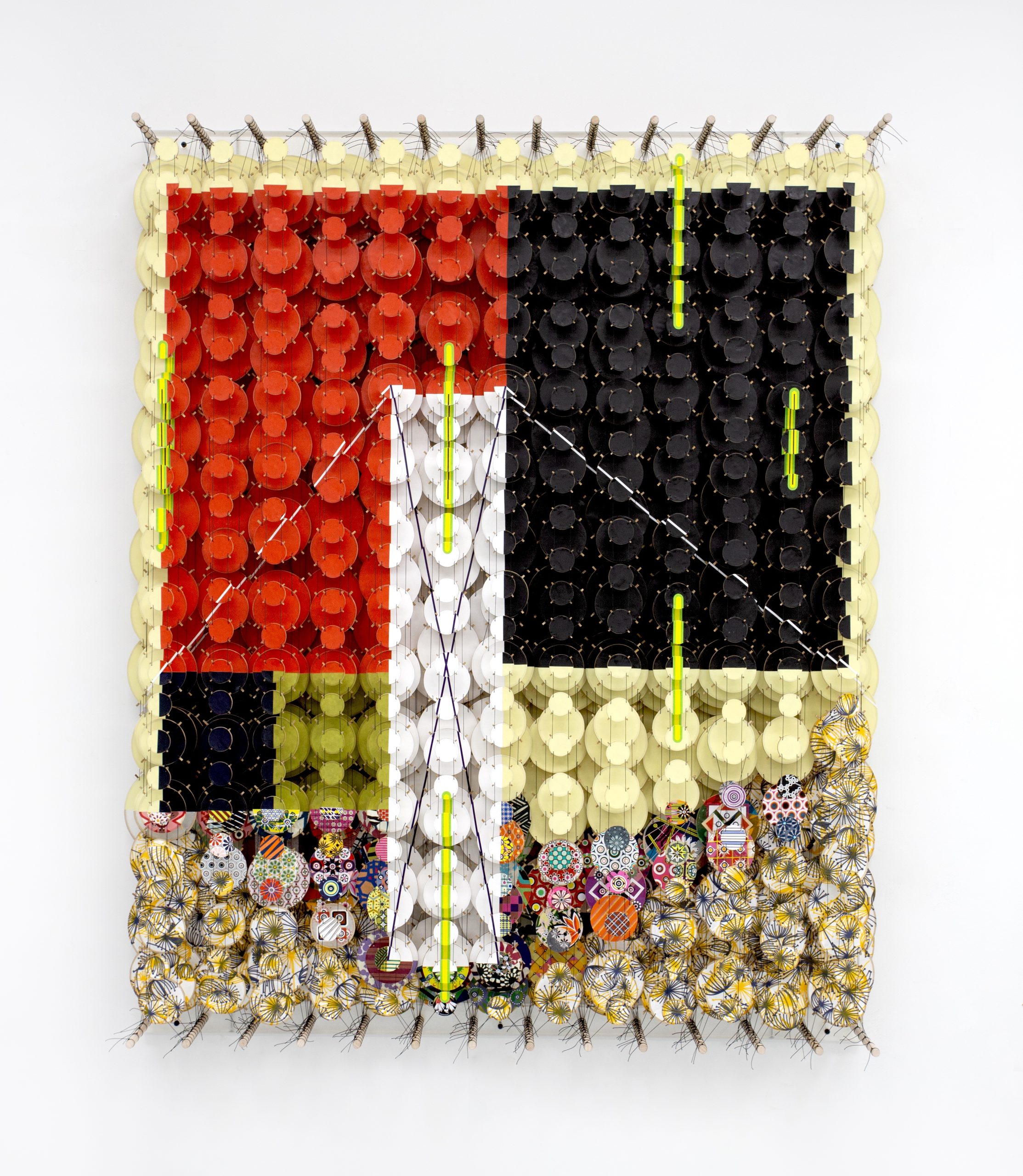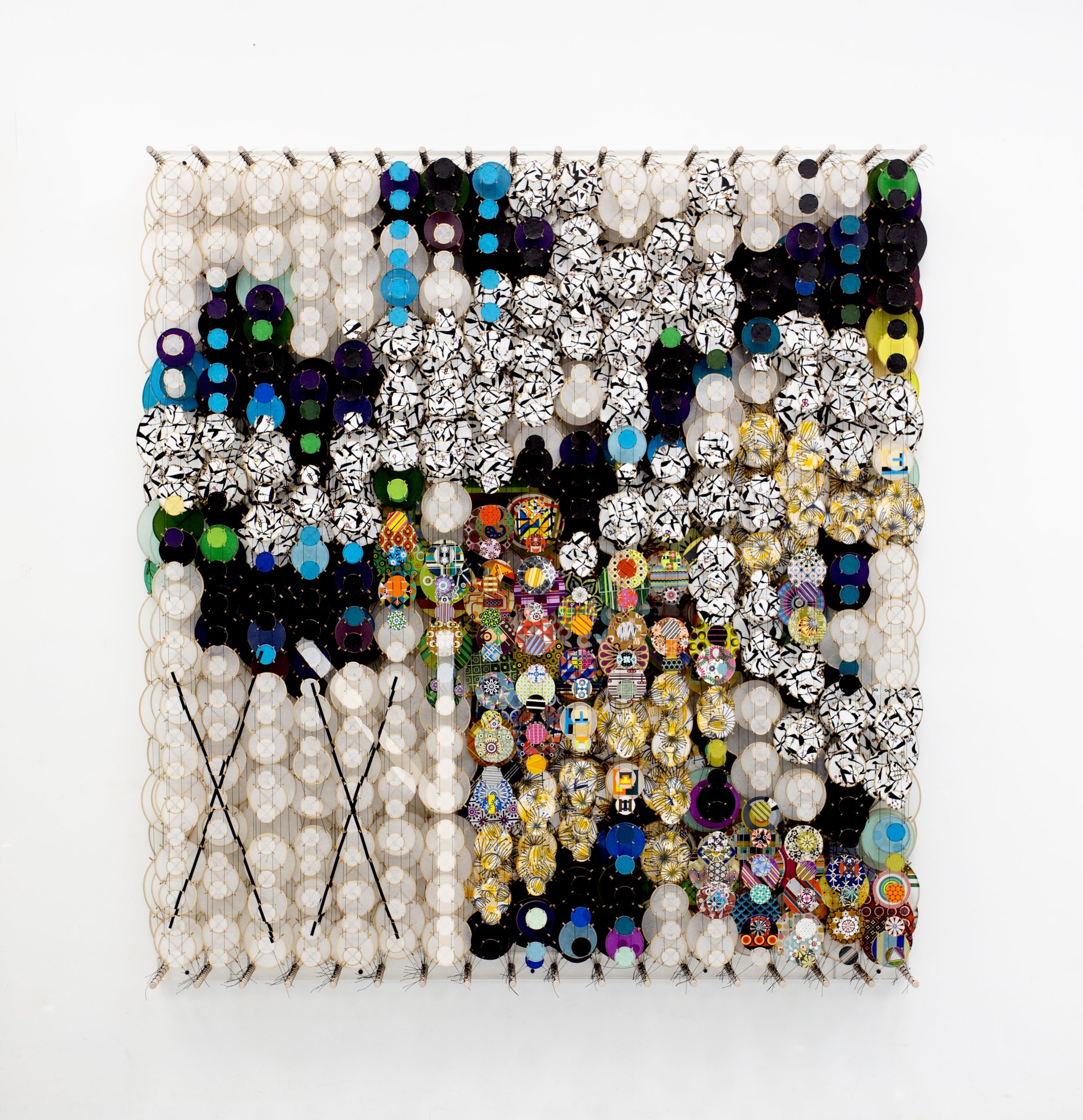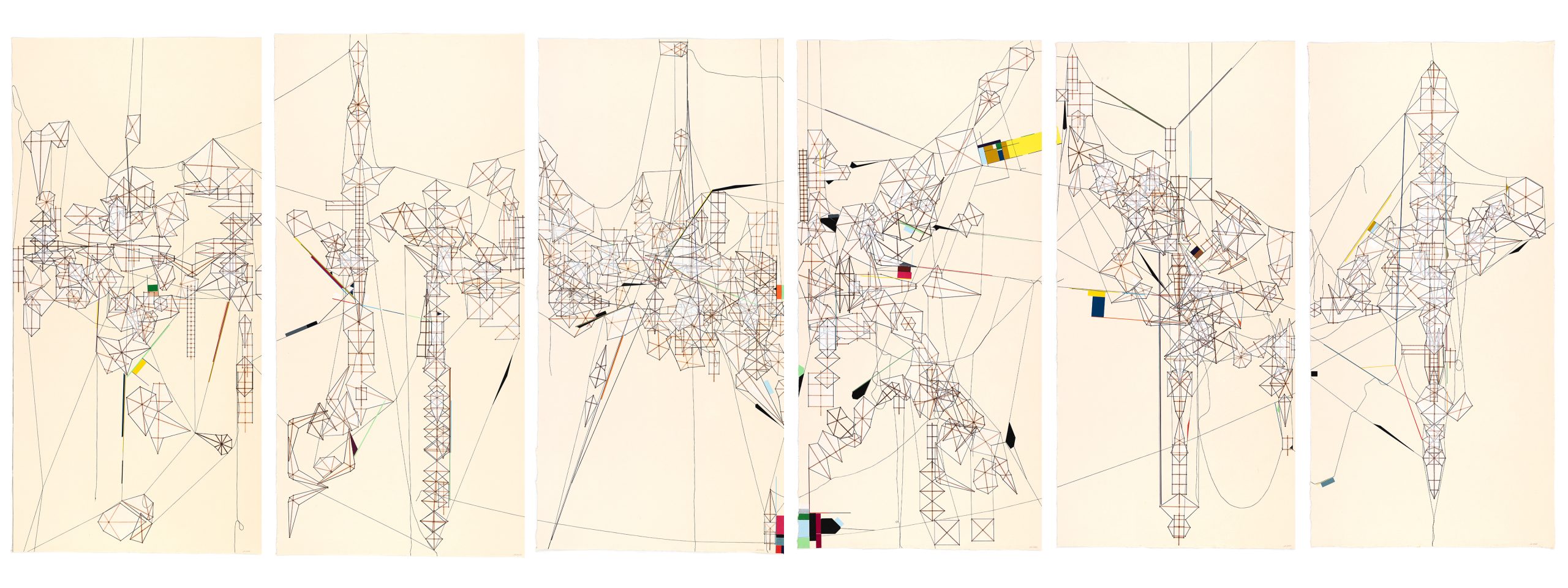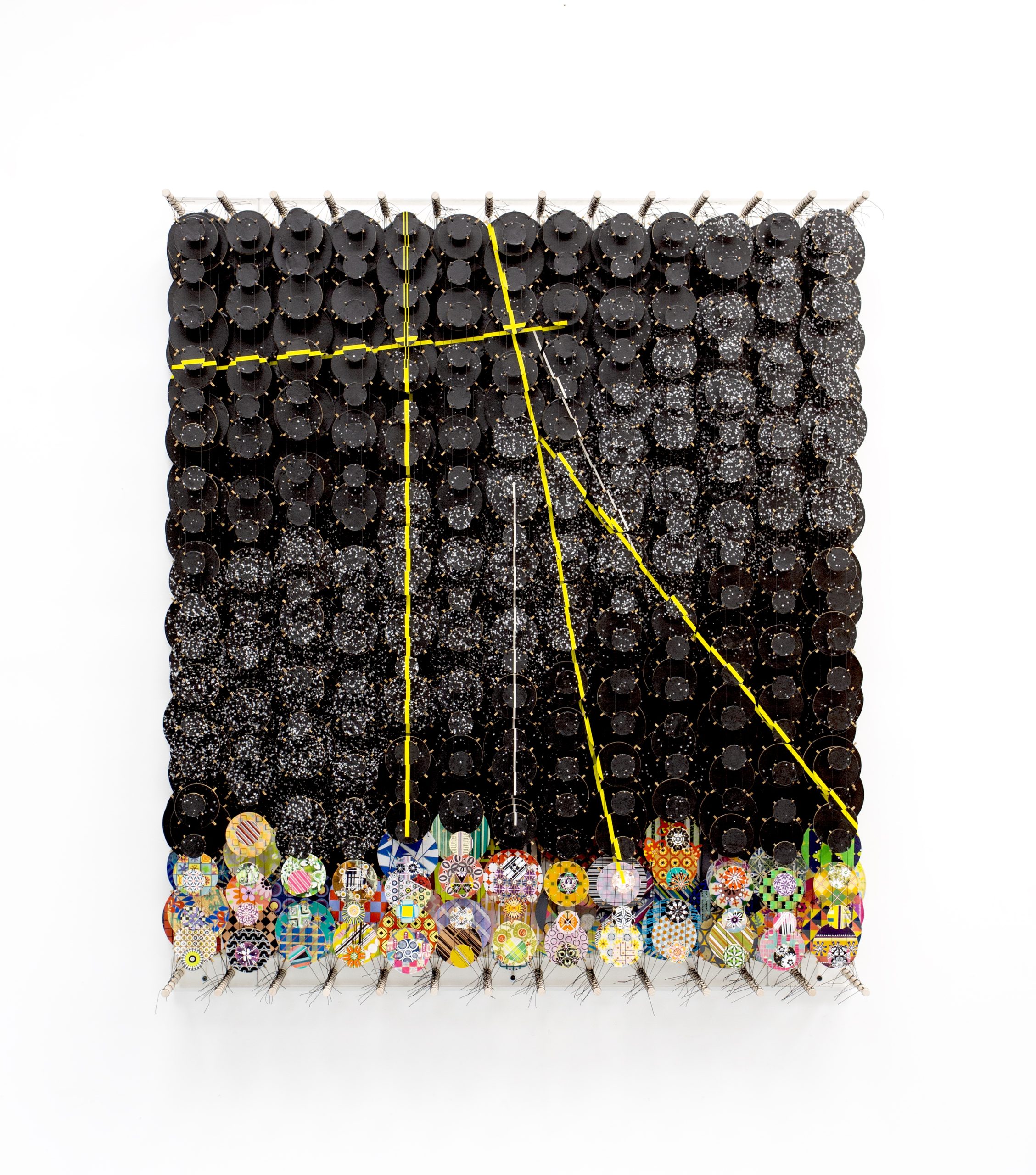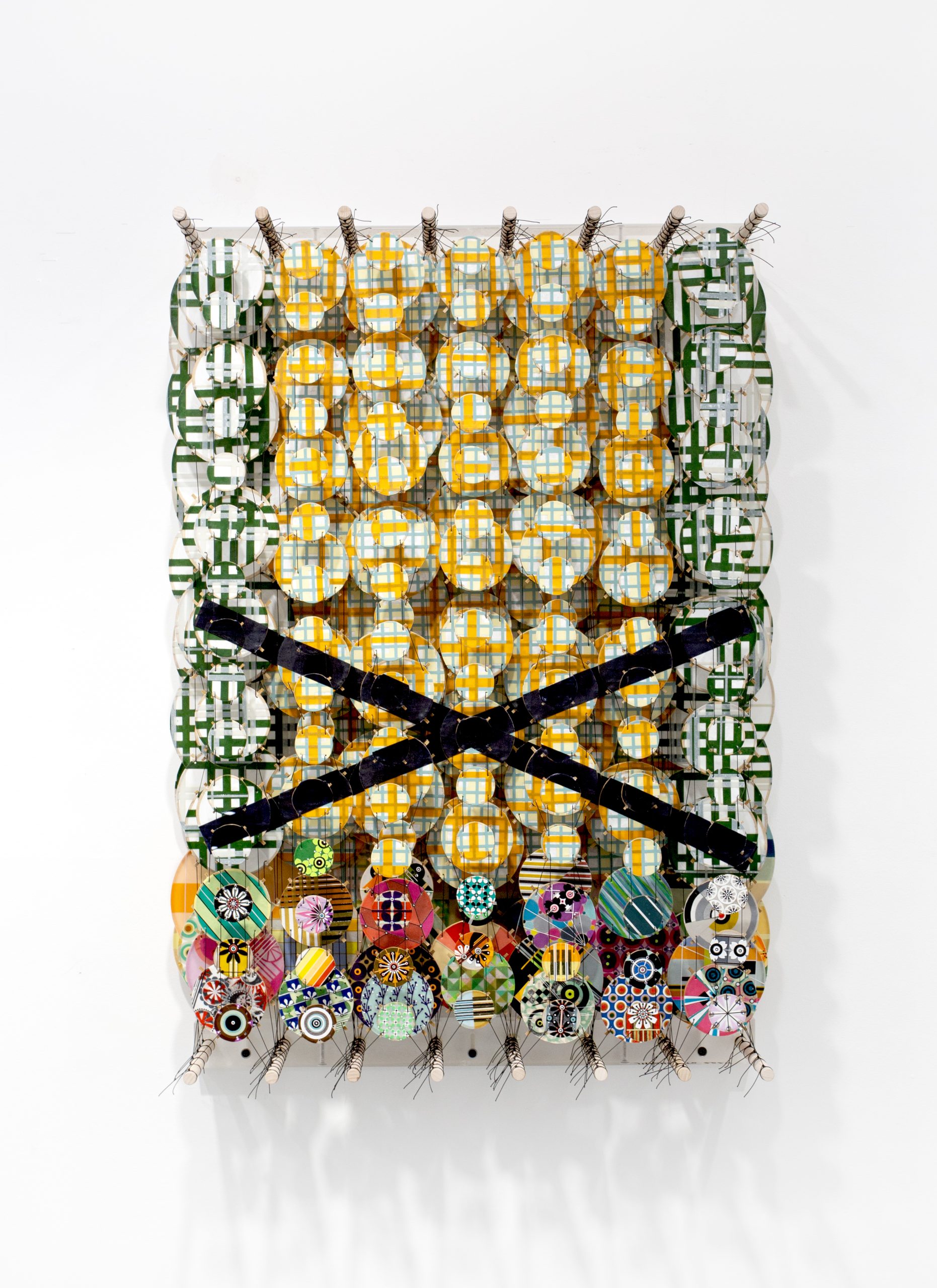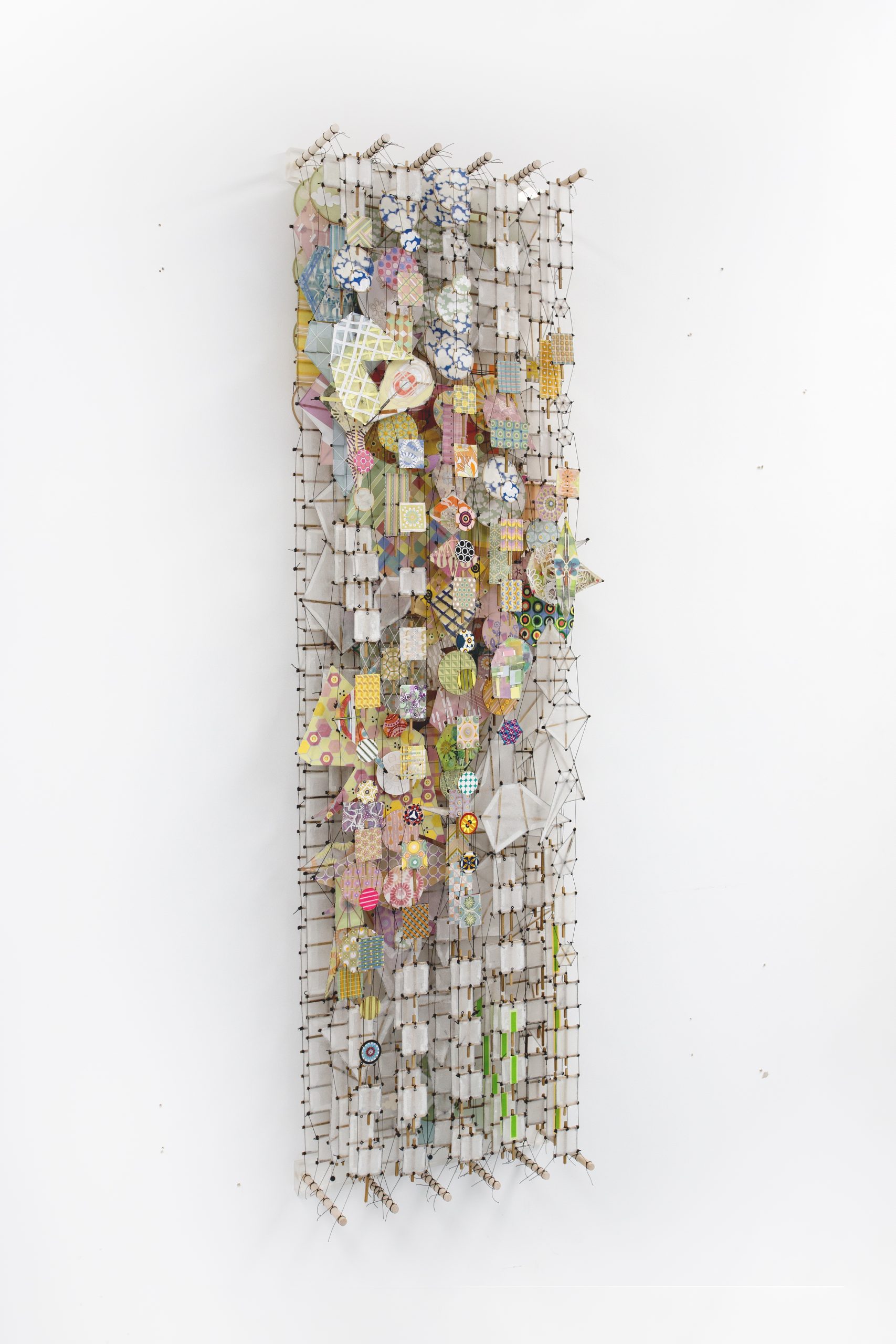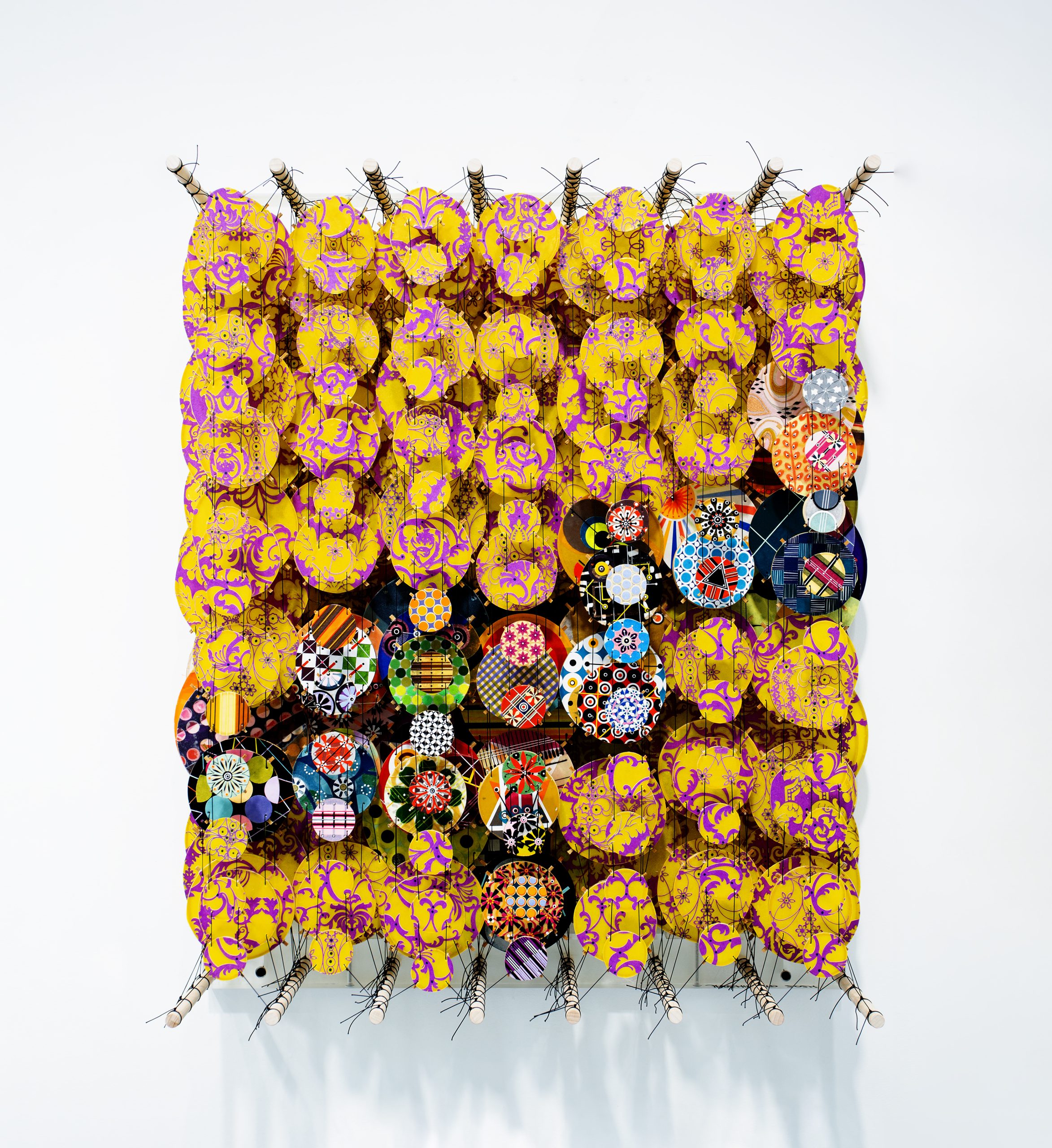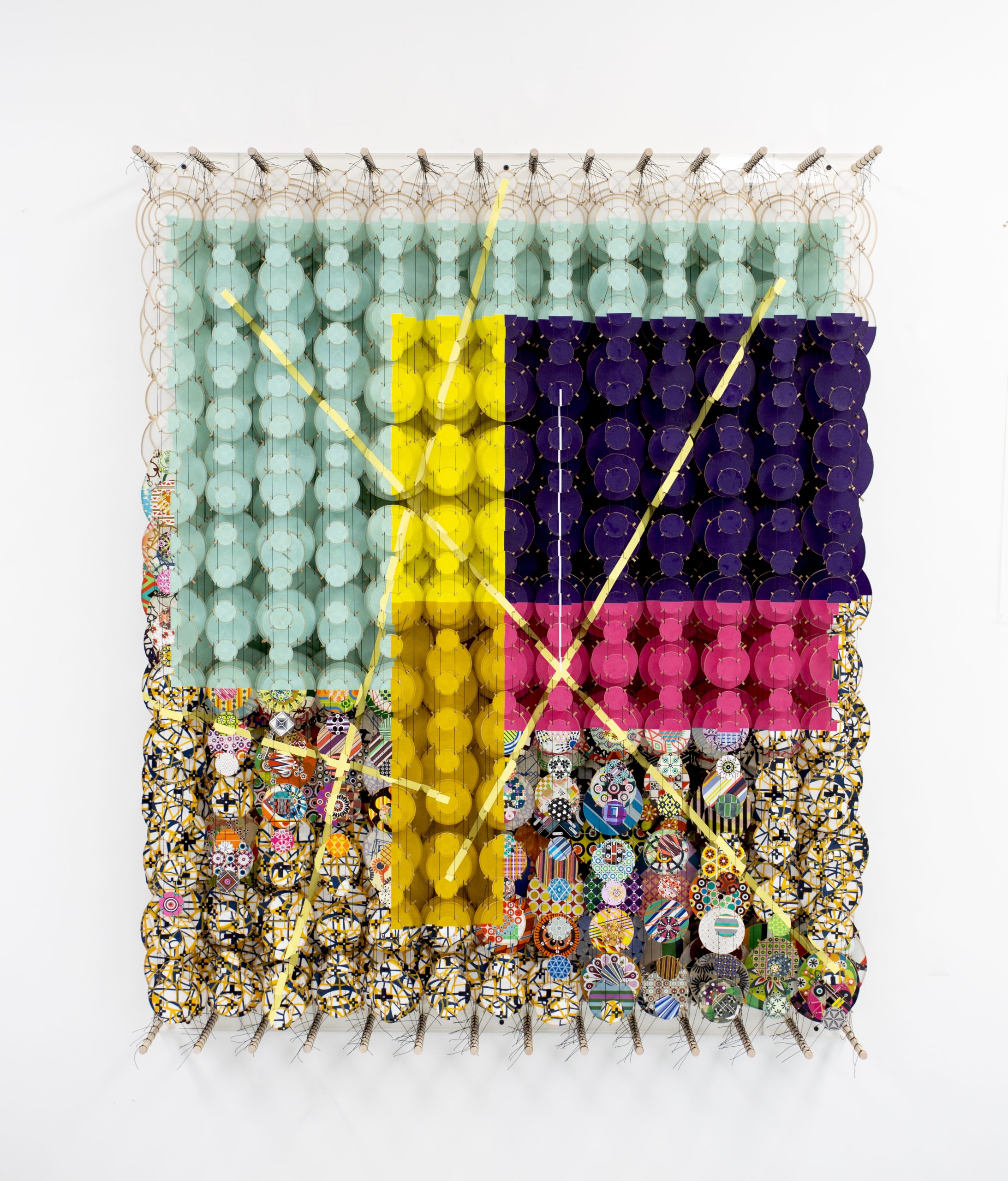Jacob Hashimoto
Not After a Million Years
Talley Dunn Gallery
October 5, 2024 – January 25, 2025
Talley Dunn Gallery is immensely honored to present the highly anticipated, solo exhibition of internationally acclaimed artist Jacob Hashimoto. Hashimoto’s inaugural exhibition at the gallery, Not After a Million Years, will be on view October 5, 2024 – January 25, 2025.
Jacob Hashimoto is renowned for his mesmerizingly immersive installations composed of thousands of layered, kite-like disks that hover from above in delicate suspension, subsuming the space of the viewer. Engaging with a lineage of artists who have challenged the boundaries of the picture plane, Hashimoto explodes the space of painting into the gallery, configuring the viewer as a central part of the artwork’s composition. The artist developed this language of installation in the 1990s, and it remains at the core of his practice, which has evolved to include wall-mounted sculptural works and large-scale works on paper. Not After a Million Years introduces the full breadth of Hashimoto’s work, showcasing recent artworks across each of these modes and offering a breathtaking look into the artist’s singular practice.
Hashimoto created a remarkable site-specific installation for this exhibition that has entirely transformed the gallery with over ten thousand bamboo and paper kites. Previously unfamiliar with the gallery space, Hashimoto responded directly to its particular environment only upon his arrival, harkening back to his early work when spontaneity and adaptation were key. As such, the installation is uniquely configured to the gallery’s infrastructure, even requiring a new method of installation to hang the kites. The gallery’s expansive setting provides a rare opportunity to experience Hashimoto’s work on such a grand scale, something that can only truly be appreciated in person. The light that permeates through the artist’s cascading diaphanous paper forms invites the eye to linger on a ray of sun or the stillness of the air, to become immersed in an expanse of space, form, and color.
On his use of kites, Hashimoto reflects on his interest in them as a pan-cultural symbol. Everyone has a connection to kites—from the artist’s own bamboo framed ones to the diamond-shaped kite famously associated with Benjamin Franklin. Elevating the kite to an art object, the kite becomes a universal form that welcomes and connects all viewers. Working in collage, Hashimoto draws inspiration for their abstracted designs from specific references to a diverse medley of subjects ranging from cell patterns of historic disease epidemics to the collapse of the Arecibo Observatory in Puerto Rico. While the artist describes his work as a kind of self-portrait, viewers are not meant to parse out the artist’s citations but are invited to derive their own meaning from experiencing the work, to form their own relationships to it. A profound sense of possibility abounds in Hashimoto’s experiential landscapes, capable of igniting creativity within viewers to foster a more thoughtful, connected, and imaginative world.
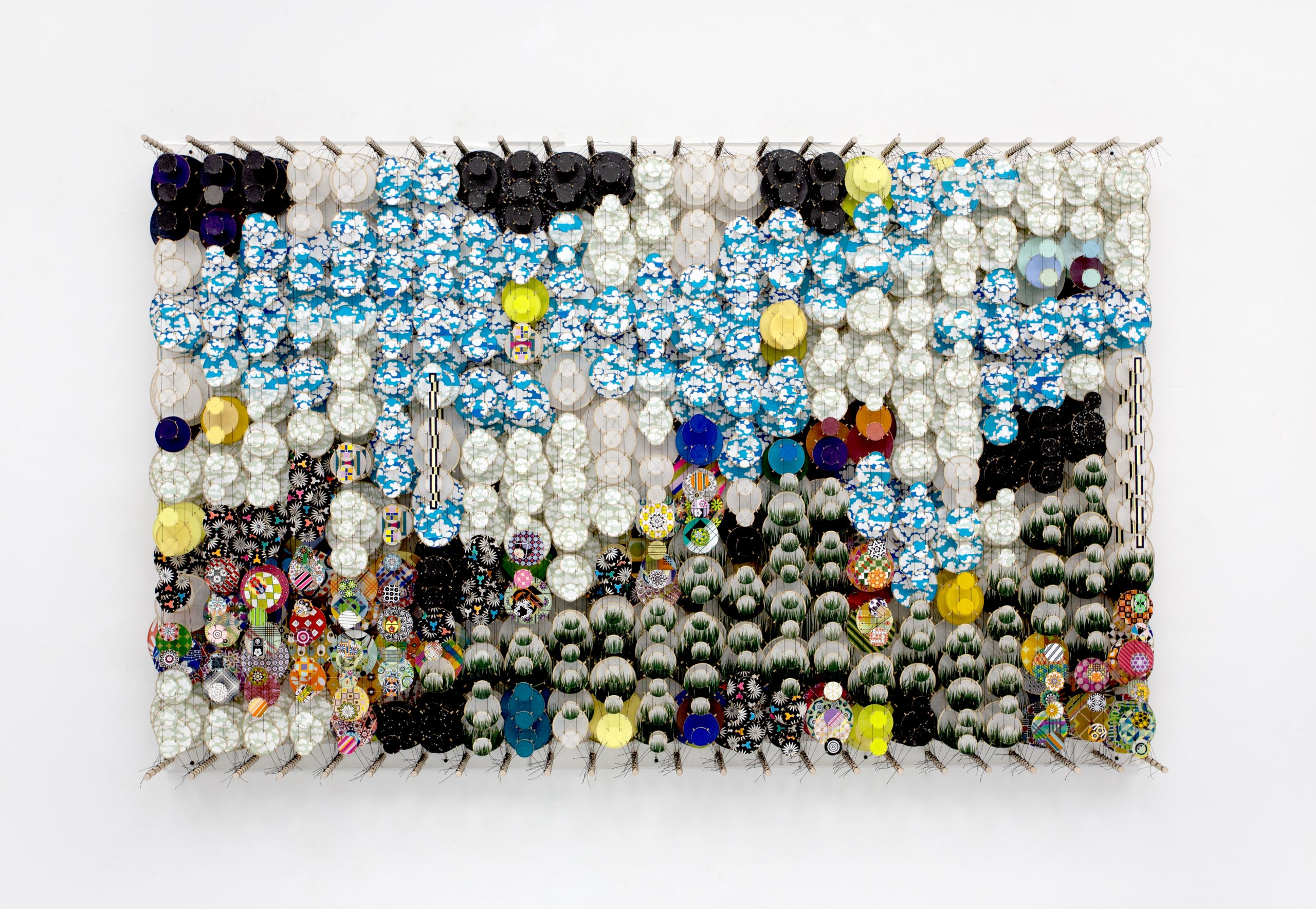
Using sculpture, painting, and installation, Jacob Hashimoto creates complex worlds from a range of modular components: bamboo-and-paper kites, model boats, even astroturf-covered blocks. His accretive, layered compositions reference video games, virtual environments, and cosmology, while also remaining deeply rooted in art-historical traditions notably, landscape-based abstraction, modernism, and handcraft.
Jacob Hashimoto was born in Greeley, Colorado in 1973 and is a graduate of The School of the Art Institute of Chicago. He lives and works in Ossining, New York. Hashimoto has been featured in museum exhibitions at MOCA Pacific Design Center in Los Angeles, MACRO – Museum of Contemporary Art in Rome, Fondazione Querini Stampalia in Venice, LACMA – Los Angeles County Museum of Art in California, Schauwerk Sindlefingen in Germany, Wäinö Aaltonen Museum of Art in Finland, Galleria d’Arte Moderna “Achille Forti” in Italy, Museo di Storia Naturale in Italy, Site Santa Fe in New Mexico, Science Museum of Oklahoma and the Crow Museum of Asian Art in Texas. His work is in the collections of LACMA – Los Angeles County Museum of Art; The Metropolitan Museum of Art, New York; EMMA – Saastamoinen Foundation, Schauwerk Sindelfingen; The California Endowment; Tacoma Art Museum, Washington; Cornell Tech Art, New York; Art in Embassies, U.S. Department of State, as well as many others.

